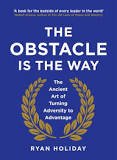Within education we often make use of a variety of models in our everyday job and in discussions, as well as on social media. Currently the model of a fixed or growth mindset is reasonably popular however it isn’t popular with everyone, with some people suggesting that the concept of fixed and growth mindset is very artificial.
Other models which have been common at one time or another including the concepts of blooms taxonomy, learning styles, the SAMR model for tech integration, students and gifted and talented students, to name but a few. The purpose of each of these models is to help in our understanding.
Going back to the idea of fixed and growth mindsets, it is easier to make a comparison between these two models when we assume they are very much different. Therefore it is easier to understand the two concepts by making such comparisons, with these comparisons reinforcing the distinction between the two concepts. This leads to the view that distinct categories exist such as people which have a growth mindset and those that have a fixed mindset.
The truth is that in the real world things are not quite so simple. Firstly humans change with time and dependent on the situations they find themselves in, the company they find themselves with, along with a variety of other factors. As such a person may display characteristics associated with a growth mindset in one situation while displaying characteristics associated with a fixed mindset in a different situation. In addition the actual concepts such as that of the growth mindset and fixed mindset are not binary categories with people being one or the other. It may be better to describe categories such as the growth and fixed mindsets as two opposite ends of a continuum. As such, within a given situation, a person may be more or less engaged in a growth mindset, displaying more or less prominently the characteristics of this mindset, with the same equally being possible for a fixed mindset.
So considering the above it might be appropriate to suggest that we could describe people as having a magnitude and probability within a given model, such as that of the growth and fixed mindset. So a given person may have a high probability of displaying a moderate level of growth mindset characteristics, with a low probability of displaying strong fixed mindset characteristics when presented with a given situation, person or event. This description may be more accurate in terms of describing a person, however I doubt it will catch on given the resulting complexity of the description. I think a person like that indicated above would just be considered to have a growth mindset.
The main issue here is that the models we use, including the fixed and growth mindset, help us in understanding concepts and make descriptions easier. This being said this ease is at the expense of accuracy. It is important to remember this and not to take the models we use as being literally correct in that the distinctions between one and the other are knife edged, clear and provable. They are not! Plus people are complex and therefore tend towards unpredictable behavior and on some occasions even randomness. The best any model can provide is a guide or a probability however a guide or probability is better than nothing.



